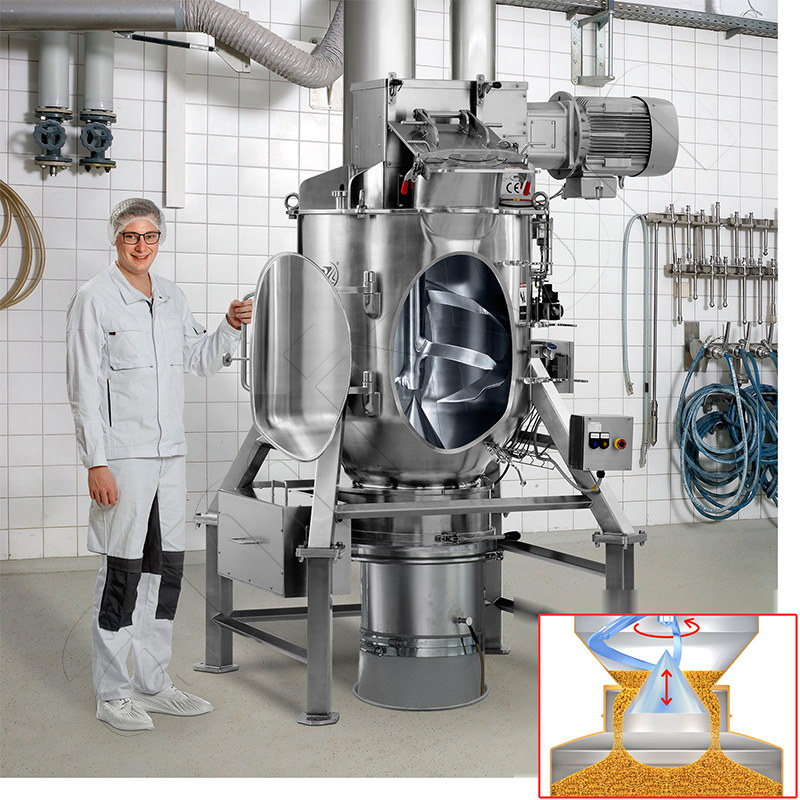
Damp cloth cleaning
Three types of cleaning: (a) dry cleaning, (b) cleaning with damp cloths and (c) wet cleaning (with spray water).
Powder mixers and powder mixing systems must be cleaned regularly. Despite careful sealing and high-precision processing, dust is inevitably generated during the manufacture and processing of dry powder products. In rare cases, this dust can escape from the system into the operating environment, where it is undesirable. For this reason, production rooms and equipment are cleaned regularly – usually as part of a dry cleaning process, e.g. with industrial vacuum cleaners or sterile hand brushes. This type of cleaning mainly affects the operating environment outside the process equipment.
Much more time-consuming, however, is the cleaning of plant components that come into contact with the product, such as pipes, mixers, conveyors, separators, grinding units or filters. These areas are often difficult to access and require targeted cleaning, depending on the production concept. In so-called single-product plants, which always process the same product in continuous operation, cleaning is usually only carried out as part of scheduled maintenance or inspection intervals. The situation is different for contract manufacturers, who regularly switch between different product types and therefore have to clean after each product change.
Depending on the cleaning requirements, either dry or wet cleaning is used. Wet cleaning is carried out with water or cleaning fluids – manually or automatically. A prerequisite for automated wet cleaning is that the plant is prepared for this, e.g. by installing washing lances or rotating cleaning nozzles. Wet cleaning is particularly common in industries that work with flavours, essences or pharmaceutical agents, or that regularly switch between kosher, halal, allergenic and non-allergenic products.
An interesting intermediate form is damp cleaning. This is carried out with damp disposable cleaning cloths – manually and in a targeted manner, without soaking the system. Damp cleaning is preferred in businesses that want to avoid water as much as possible – whether to avoid long drying times or to prevent contamination, corrosion or steam pollution of the room air. The damp cloths used can be impregnated with special solvents – e.g. with non-polar, water-free substances that effectively remove grease or aroma residues.
Lint-free, tear-resistant and chemical-resistant disposable wipes, such as those used in the food, pharmaceutical and chemical industries, are particularly suitable for this type of cleaning. They are often antibacterial, food-safe and supplied pre-moistened in hygienic dispenser boxes.Manufacturers such as Kimberly-Clark (WypAll®), Vileda Professional (MicronRoll), Tork and Contec offer suitable solutions. Alternatively, dry cloths can be impregnated with individual cleaning media.
This method is particularly suitable for systems that are emptied almost completely after the mixing process.This means that amixon®mixers such as the KoneSlid®, which discharge themselves almost completely, show only minimal dust adhesion. In many cases, this can be removed completely and efficiently with damp cloths. Wet cleaning is therefore thorough, safe and quick. Practically no time is needed to dry the system. There is no measurable vapour that humidifies the room air.
